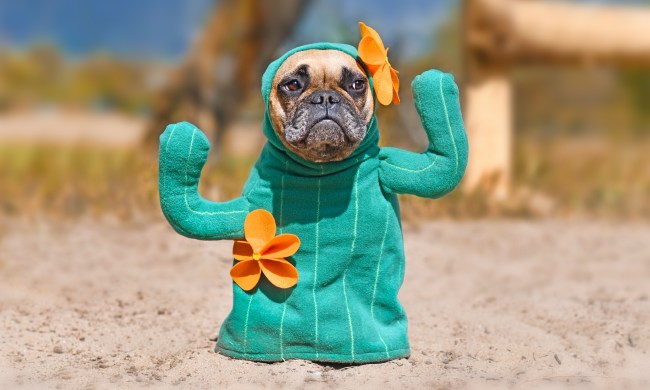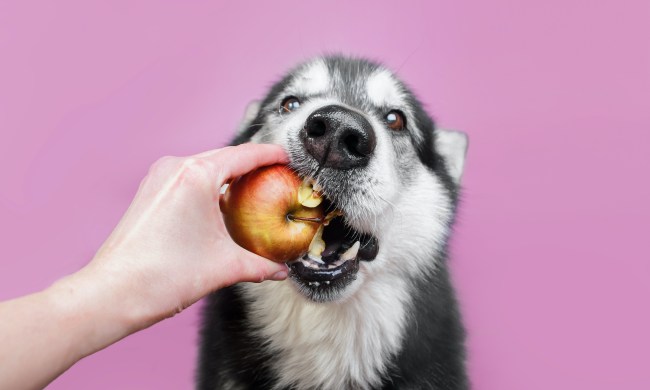If you have a dog and live in a hot place, you’re probably curious as to the best way to keep their paws protected in the summer. You might be wondering, “Is it cruel to put shoes on a dog?” If this sounds like you, we have just the article for you! Dive in to find out all about dog shoes, also called dog booties.
Ways to keep your dog cool
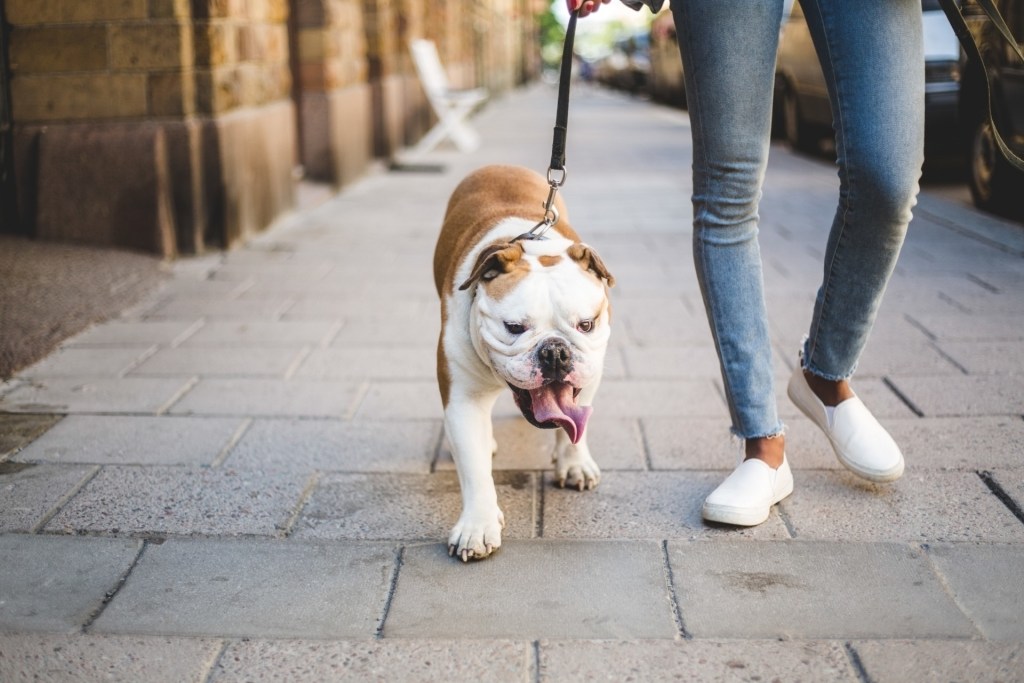
There are a few precautions you can take to avoid injury to your pup’s paws prior to resorting to booties. You may discover that these precautions alone are enough to protect your pooch. Most importantly, don’t walk your dog during the hottest times of day — in the hours surrounding noon. To determine how hot pavement is, place your hand on it for 10 seconds; if you can do that without flinching, it is cool enough for your dog to walk on barefoot. If possible, walk your dog on the grass instead of on sand, concrete, or asphalt. If there’s no grass where you live, try to drive your dog to a nearby grassy area or park to walk them. As a general rule, don’t make your dog walk barefoot anywhere you wouldn’t want to walk barefoot.
During the cooler months, consider walking your dog more often so as to build up the calluses on their paws, which protect them from burns. However, even if you follow these guidelines, you and your dog might encounter other obstacles. Broken bottles, burrs, and rocks can all cut a dog’s paw pad or get stuck in between their toes. If you live in an area where these objects are common, if you go hiking often, or if walking on grass isn’t an option, you may want to consider investing in a pair of dog shoes.
Types of dog booties
A variety of dog booties exist, made from different materials and with different purposes. Some are intended just for use in the snow, and others for the warmer months. The type of dog shoes you buy will depend on the climate that you live in. People who walk their dog on the beach often will likely appreciate a waterproof pair of dog boots, although this isn’t so necessary in a desert environment. Note that some fabrics are more breathable and comfortable than others. Fleece-lined shoes probably aren’t the best idea in the summer, for instance.
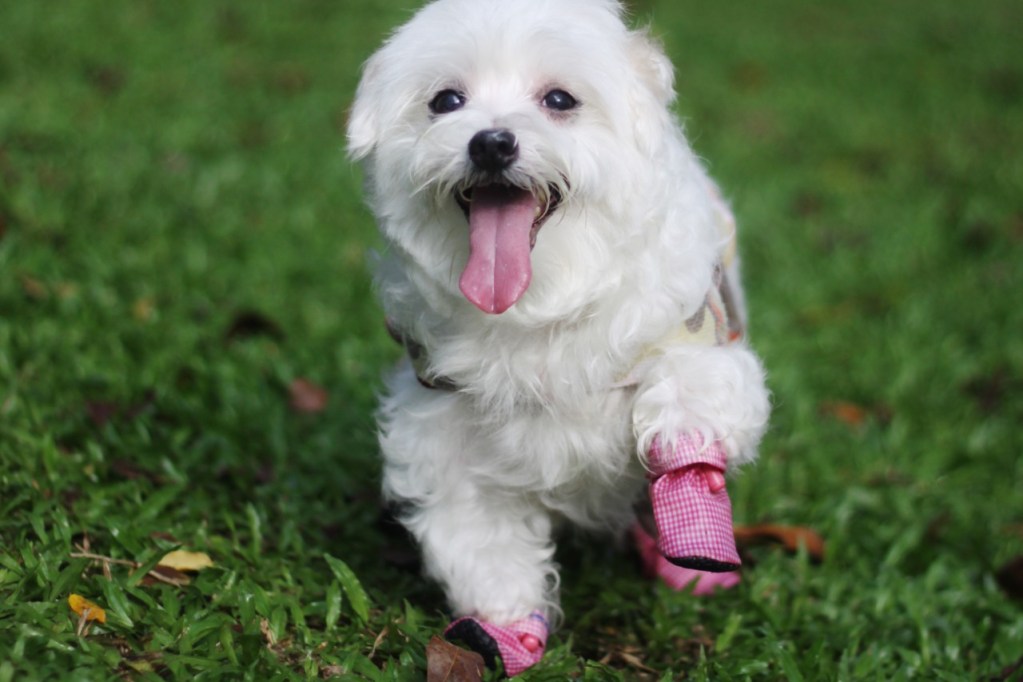
You can buy dog booties that have reflective tape or even lights for heightened visibility at night. And many dog shoes have nonslip pads to give your dog traction that is lost by putting something over their paws. Also, some boots have Velcro straps, while others stretch to fit a dog’s paw. Before purchasing a pair of dog booties, keep reading to find out how to prevent your dog from becoming Houdini and taking them off.
How to keep dog boots on
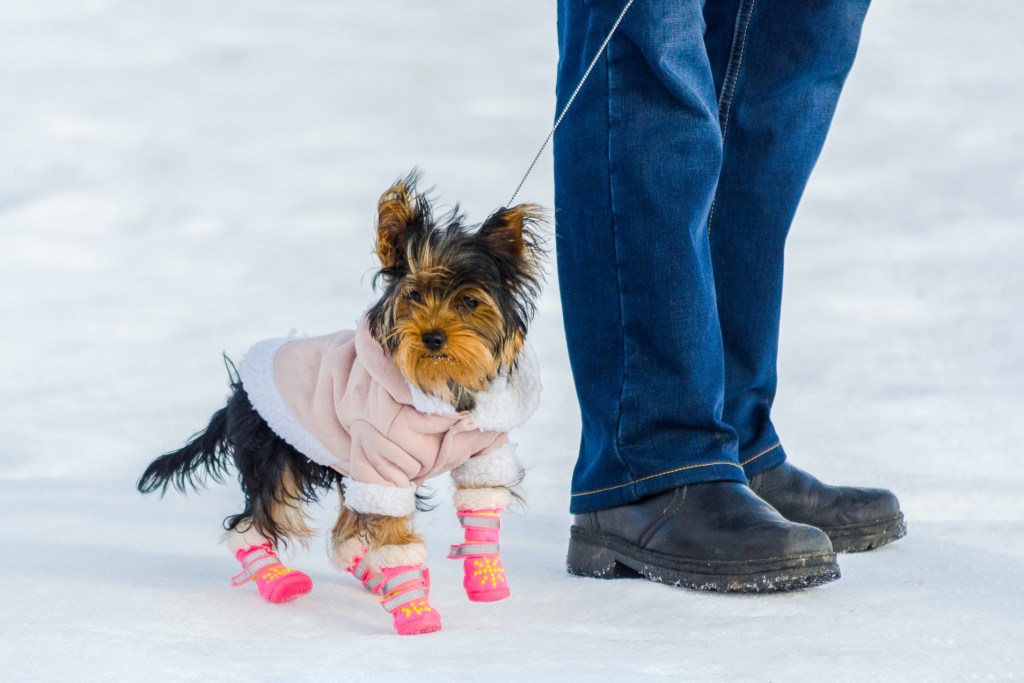
Some dogs will be more hesitant to let you put booties on them than others. Regardless of how you get them on, getting them to stay on is an even more difficult task! You can make this feat easier by taking the following steps. Pick a pair of booties to start with. We recommend you get a high-quality pair with good reviews, as these generally last longer and stay on better. Before buying any pair of dog shoes, be sure to use the manufacturer’s guide for measuring your dog’s paws to ensure that you buy them a pair that fits.
You should always take measurements at the widest or longest point. Once you receive the booties in the mail, practice putting them on your dog before you need to use them to go outside. It is easiest to do this by placing them on your dog’s paws while they are standing. Ensure that paws are all the way in the shoe, and that the shoes are facing the right direction and have been thoroughly strapped, if needed. If secured properly, a quality pair of dog booties will stay on all through your walk.
Having to outfit your dog with dog shoes might seem like a daunting task — although it doesn’t have to be! Follow our tips and shop wisely to get a pair of booties that is perfect for your pup. Soon enough, you’ll be on your way around the neighborhood again, and this time with protected paws.
